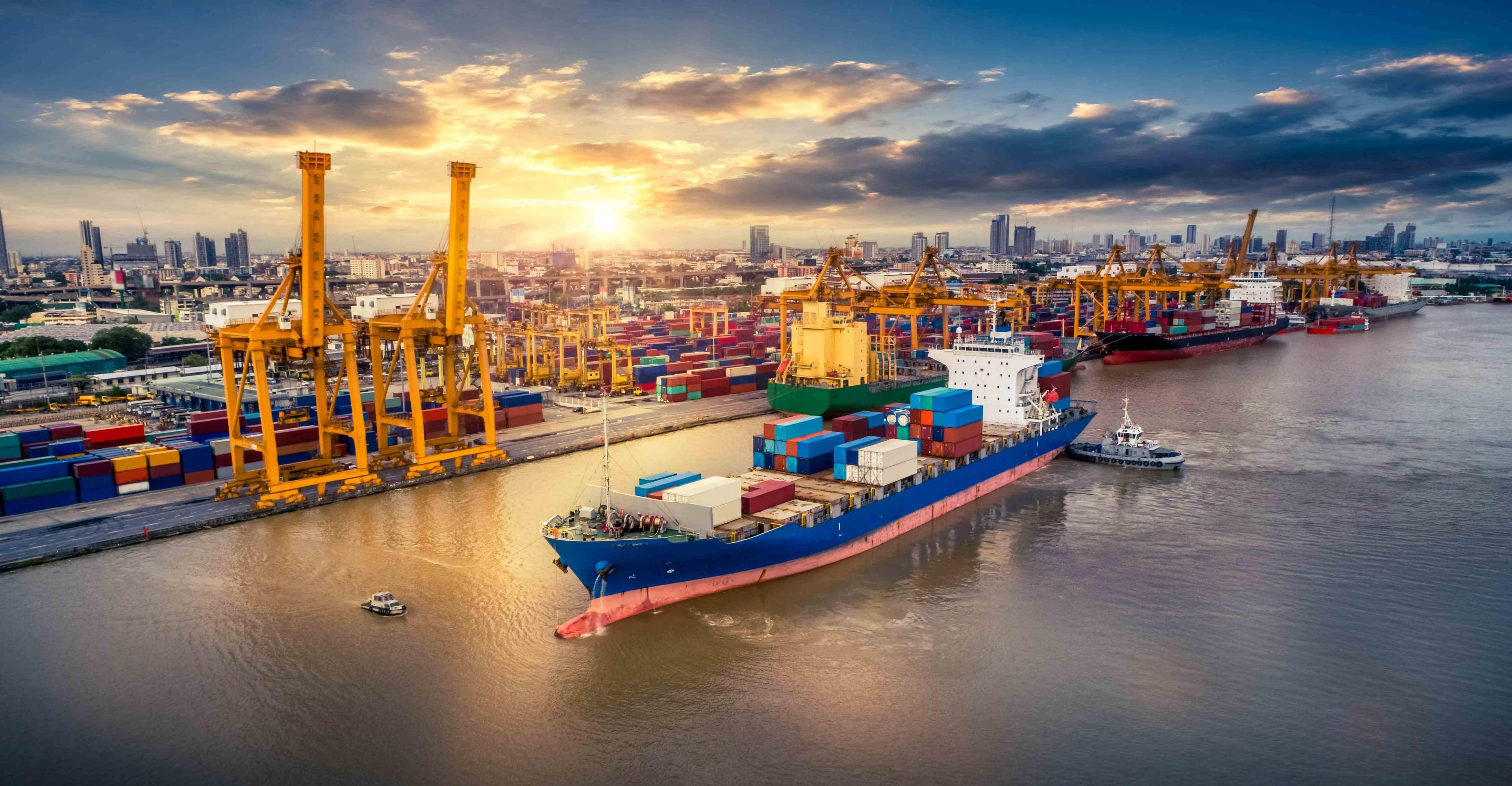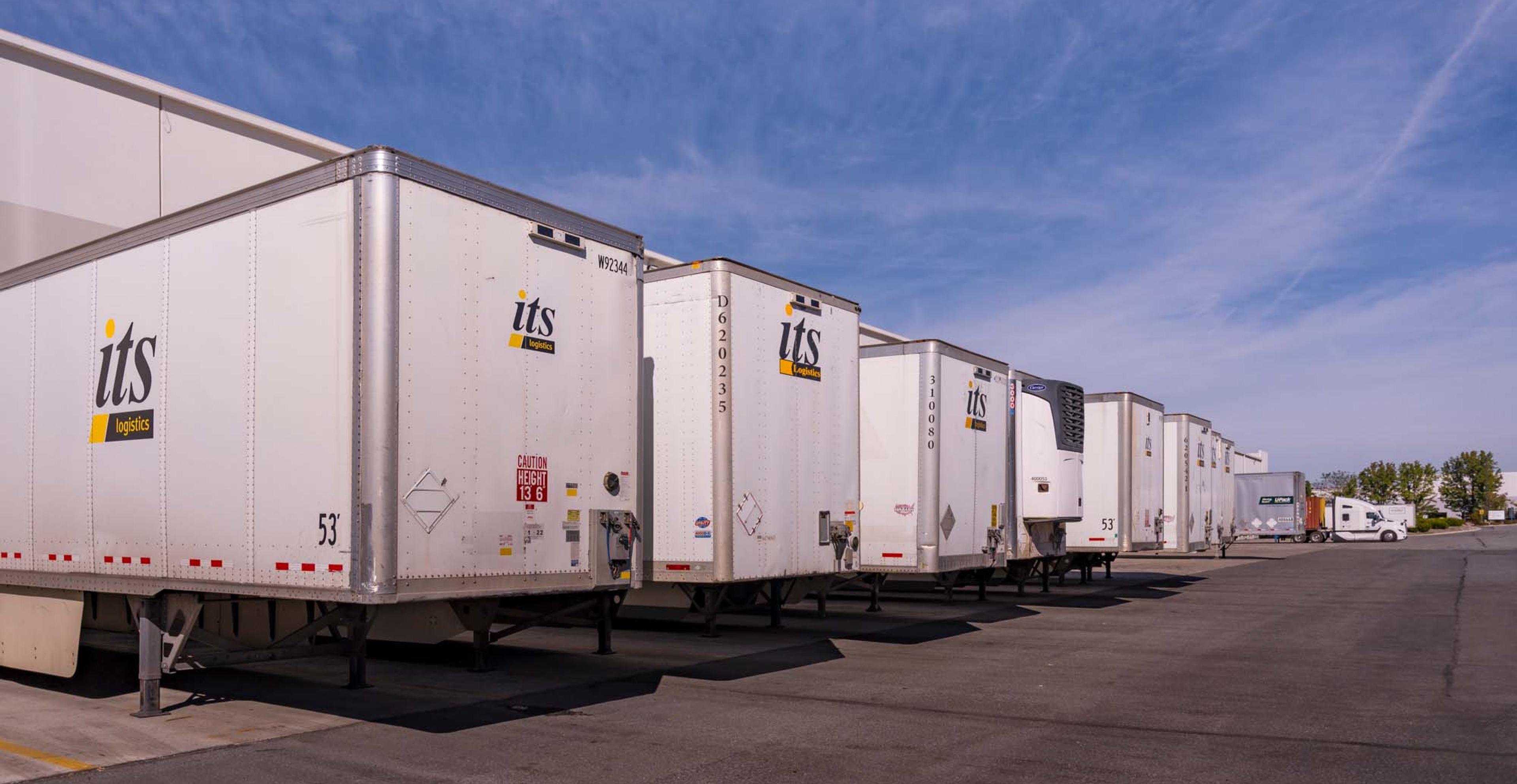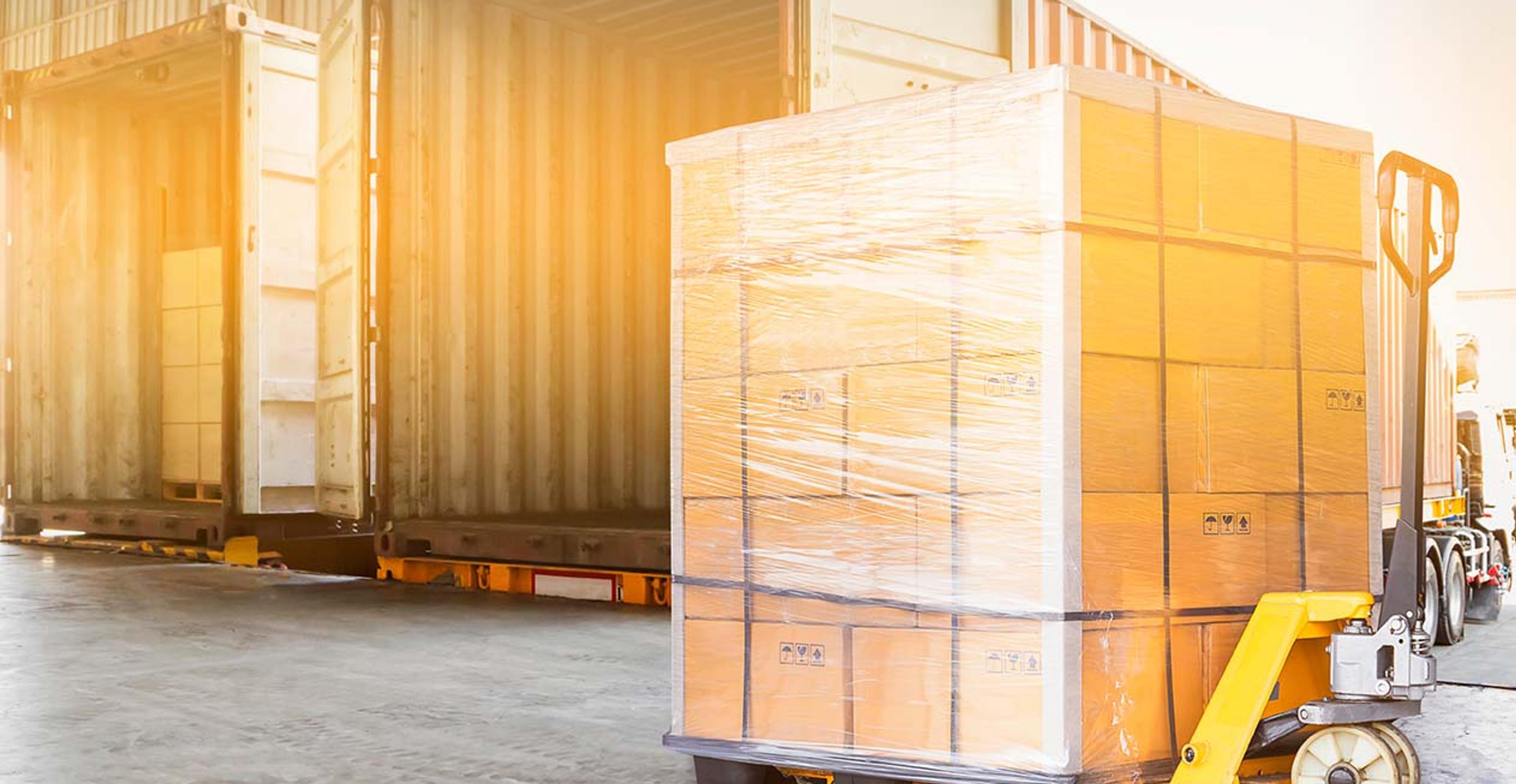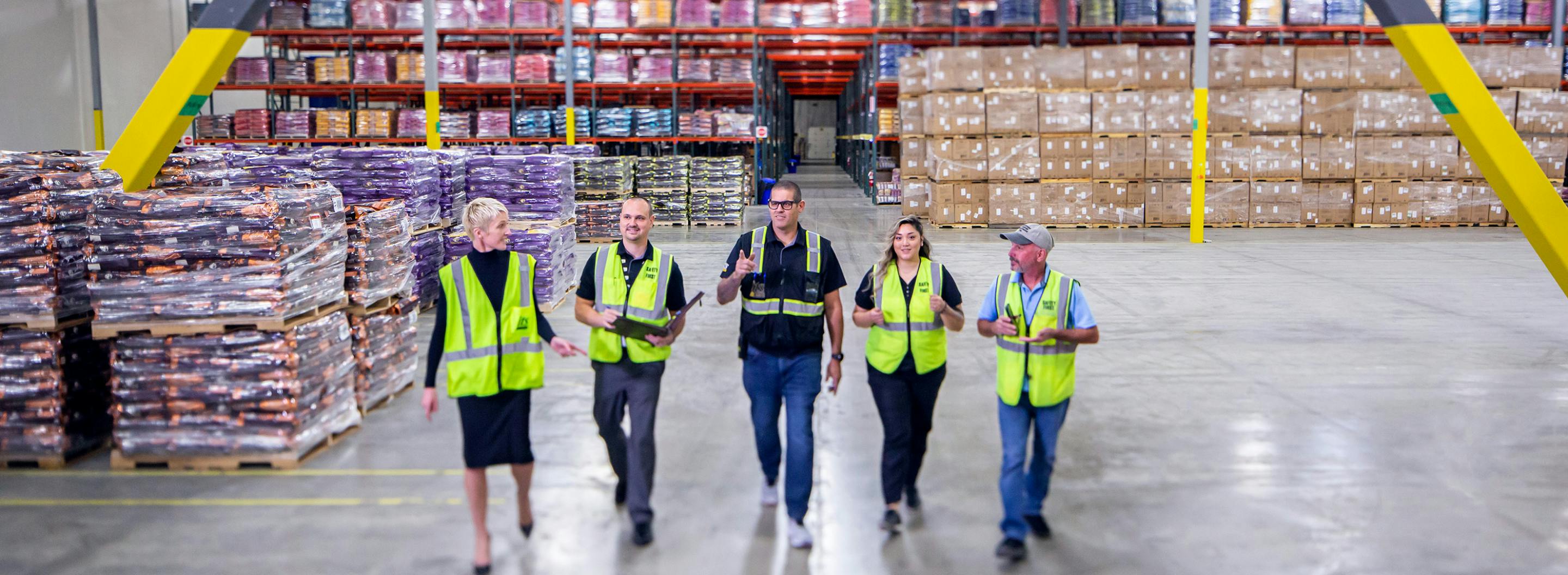A Comprehensive Guide to Intermodal Transportation

In its simplest form, intermodal transportation and intermodal drayage is the movement of freight with two or more modes of transportation within a single journey—trucks, trains, ships, etc. Transportation providers typically use ocean containers to transfer freight between modes quickly, which eliminates the need for packing or repacking cargo.
Intermodal is most useful when a shipping lane aligns with a mode of transportation—most commonly rail—other than OTR, which can sometimes be more expensive and less efficient than rail. By combining modes of transportation, shippers can save money, create efficiency, and even reduce their carbon footprint.
Importance and Benefits of Intermodal Transportation
Intermodal transportation offers numerous advantages and plays a crucial role in modern logistics and supply chain management:
- Cost Efficiency: Using different types of transportation together can often be cheaper than using just one type. This is because each mode may have its own cost advantages for certain parts of the journey.
- Reduced Transit Times: Intermodal transportation can lead to faster delivery times by leveraging the strengths of different modes of transport. For example, long-distance travel might be quicker by rail or ship, while local distribution can be expedited by trucks.
- Flexibility and Reliability: Intermodal transportation offers flexibility in routing and scheduling. It helps shippers better adapt to changes like weather, traffic, or capacity limits. This flexibility enhances reliability, ensuring that goods reach their destination on time.
- Capacity Optimization: Intermodal transportation helps spread demand across different modes of transport, making better use of infrastructure. This reduces traffic jams and congestion on roads and railways, while making ports and terminals more efficient.
- Global Connectivity: Intermodal transportation makes it easy to move goods worldwide, boosting global trade. Standard containers and compatible logistics systems simplify customs and transactions between countries.
- Risk Mitigation: Using different routes and modes of transportation lowers the chances of delays from accidents or other events. Intermodal networks offer alternative routes to keep supply chains going despite obstacles.
- Customer Satisfaction: Fast, reliable, and cost-effective delivery boosts customer satisfaction, enhancing a business's competitiveness.
Understanding Modes of Transportation
Intermodal transportation involves different modes of transport. These modes include:
- Trucking: Trucks are commonly used for the initial and final legs of intermodal journeys, providing flexibility for local pickup and delivery.
- Rail: Trains play a significant role in long-distance transportation, offering efficient and cost-effective movement of cargo over land.
- Maritime: Ships and barges handle intermodal transportation over water, connecting ports and facilitating global trade.
- Air: While less common due to higher costs, airplanes are utilized for expedited intermodal transportation, especially for time-sensitive or high-value goods.
In intermodal, these modes are integrated to create a seamless supply chain, with cargo containers easily transferred between them to optimize efficiency and reduce transit times.
Cross Docking and Warehouse Placement: an Essential Piece of Intermodal
Cross-docking and facility locations are vital aspects of intermodal transportation. Cross docking includes transferring goods directly from inbound to outbound vehicles with minimal storage time. This minimizes inventory costs, reduces handling, and speeds up the flow of goods.
Cross docking takes place at a warehouse, and the location of the warehouse is important for several reasons:
- Proximity to Transportation Hubs: Strategically locating warehouses near transportation hubs such as ports, rail yards, or major highways reduces transportation costs and minimizes transit times between different modes of transport.
- Optimized Distribution Network: Placing warehouses strategically enables companies to establish an efficient distribution network, allowing for quicker response to customer demands and reducing delivery lead times.
- Inventory Management: Strategic warehouse placement facilitates better inventory management by ensuring that goods are positioned closer to customers or distribution centers, minimizing stockouts and excess inventory levels.
- Reduced Transportation Costs: By strategically placing warehouses along transportation routes, companies can reduce transportation costs associated with long-distance shipping and last-mile delivery.
- Flexibility and Resilience: Having warehouses strategically distributed across different regions enhances the flexibility of the supply chain, enabling companies to better respond to fluctuations in demand, disruptions, and market changes.
Overcoming Diversions: East Coast vs. West Coast
Intermodal transportation proves to be a reliable solution for handling diversions, particularly in light of recent events, such as the increase in ships heading to the West Coast due to issues in the Red Sea region. This surge in freight highlights the importance of effectively using rail for inland transportation.
With ports like Los Angeles and Long Beach experiencing heightened congestion, the risk of diversions rises. However, intermodal strategies, such as incorporating rail into the transportation network, offer a way out of congestion and make sure of timely delivery of goods to inland destinations.
Understanding the reasons behind diversions is crucial for effective planning. Factors like port congestion, labor disputes, adverse weather, disasters, or regulatory hurdles can lead to diversions. Utilizing tools like the ITS Logistics Port Rail Ramp Index can help companies make informed decisions.
On the West Coast, where port congestion is a concern due to disruptions in the Suez Canal, proactive planning and optimized routing are key. Exploring alternative ports and maintaining communication with carriers and terminals can help mitigate disruptions.
Similarly, on the East Coast, diversions may occur due to port capacity issues, severe weather, or labor problems, or emergencies such as the bridge collapse near the Port of Baltimore. In such cases, diversifying transportation routes and leveraging inland ports can enhance flexibility. Close collaboration with carriers and contingency plans are vital for addressing diversions promptly.
Technology and Intermodal
Technology plays a crucial role in enhancing the efficiency of intermodal logistics. Using advanced systems like Transportation Management Systems (TMS), Electronic Data Interchange (EDI), Application Programming Interface (API), and real-time tracking solutions enhances visibility and streamlines communication. These technologies also optimize route planning and facilitate seamless coordination between different modes of transport. Integration of technology enables automation of processes, reduces manual errors, enhances decision-making capabilities, and ultimately contributes to cost savings and operational efficiency in intermodal transportation.
Intermodal and Sustainability
Sustainable practices are increasingly important in intermodal transportation to minimize environmental impact and ensure long-term viability. Adopting sustainable initiatives involves several actions: utilizing eco-friendly fuels, optimizing routes to reduce emissions, investing in energy-efficient equipment, promoting modal shift towards more sustainable modes of transport (e.g., rail and water), and implementing green supply chain practices. These efforts collectively contribute to reducing a shipment's carbon footprint and enhancing environmental sustainability in intermodal transportation. By prioritizing sustainability, businesses can meet regulatory requirements, improve corporate social responsibility, and create a more resilient and environmentally conscious supply chain.
Partnering with A Reliable Logistics Provider for Intermodal Transportation
Partnering with a reliable logistics provider for intermodal transportation is essential for ensuring seamless operations and optimal efficiency. For over 25 years, ITS Logistics has stood as the #11 Top Intermodal/Drayage Carrier in North America, offering purpose-built solutions driven by agile technology and supported by our commitment to excellence.
Our team of skilled professionals is dedicated to overcoming challenges and crafting innovative solutions tailored to your specific needs, all while maintaining a deep understanding of your business needs.
At ITS Logistics, we leverage advanced tools like ContainerAI, our proprietary container management and visibility platform, to provide real-time insights and tracking capabilities. With ContainerAI and our comprehensive drayage and intermodal TMS, we ensure superior accessorial cost management and visibility throughout the container journey.
Additionally, our national reach, operating in 22 coastal ports and 30 rail ramps across North America, and scalable capacity enable us to adapt to your strategic needs and keep shipments moving smoothly, regardless of demand or disruptions.
How can we help you?



